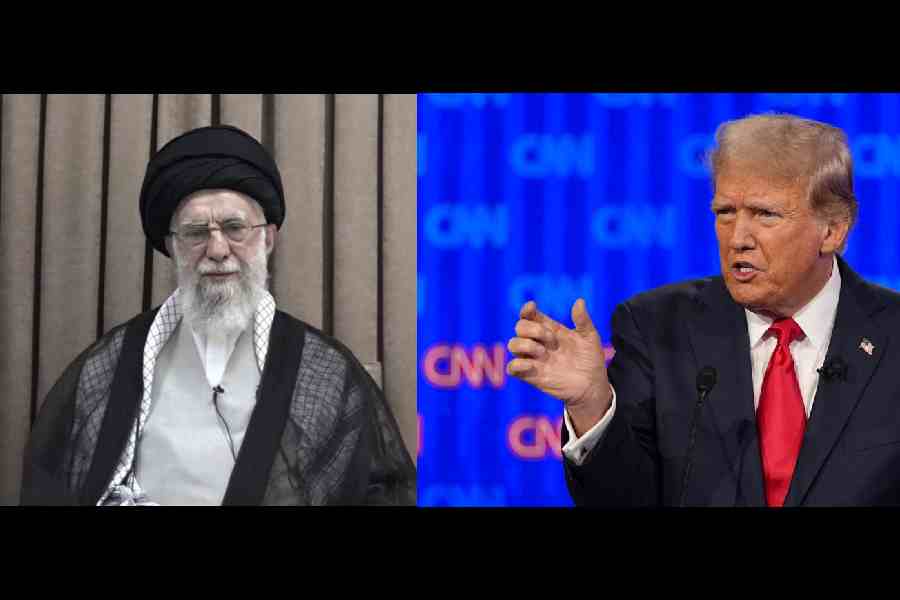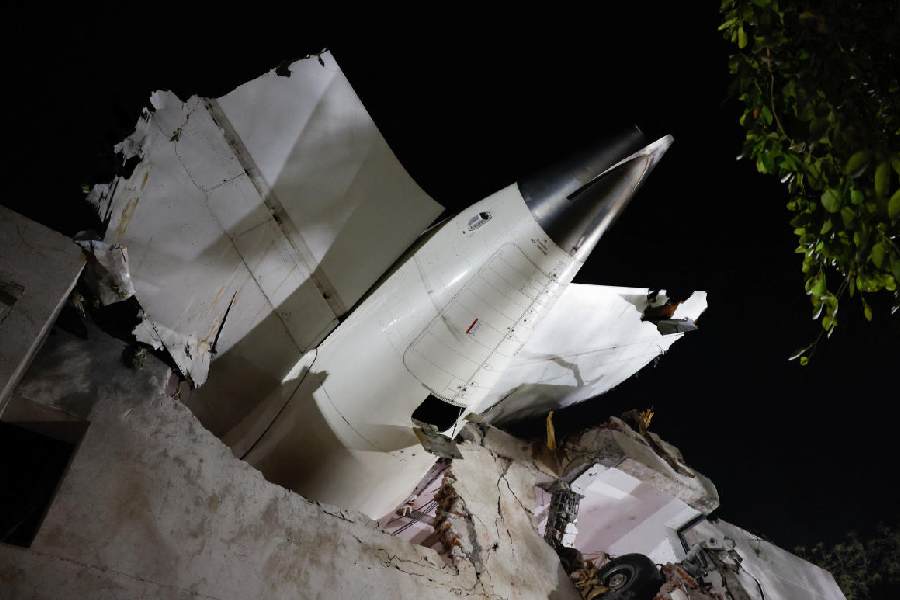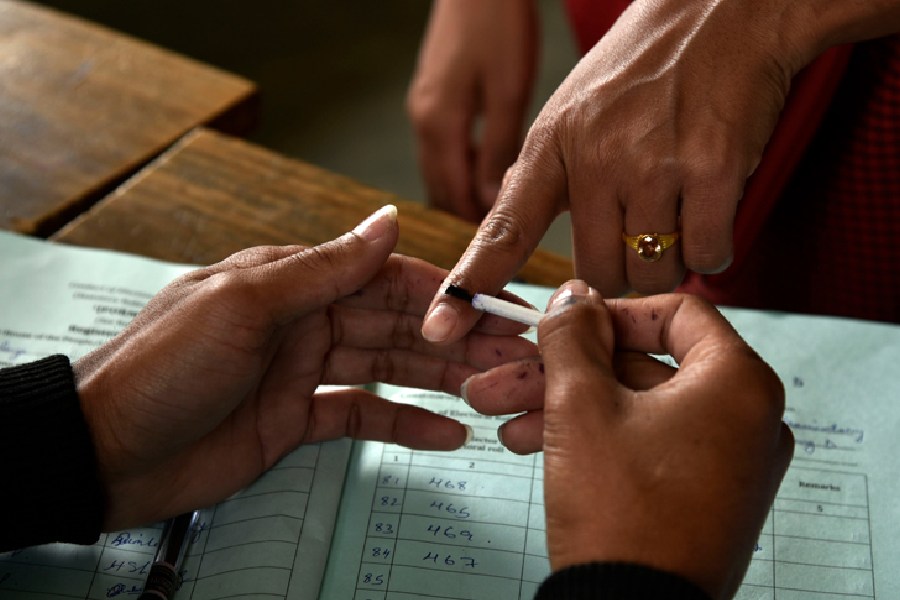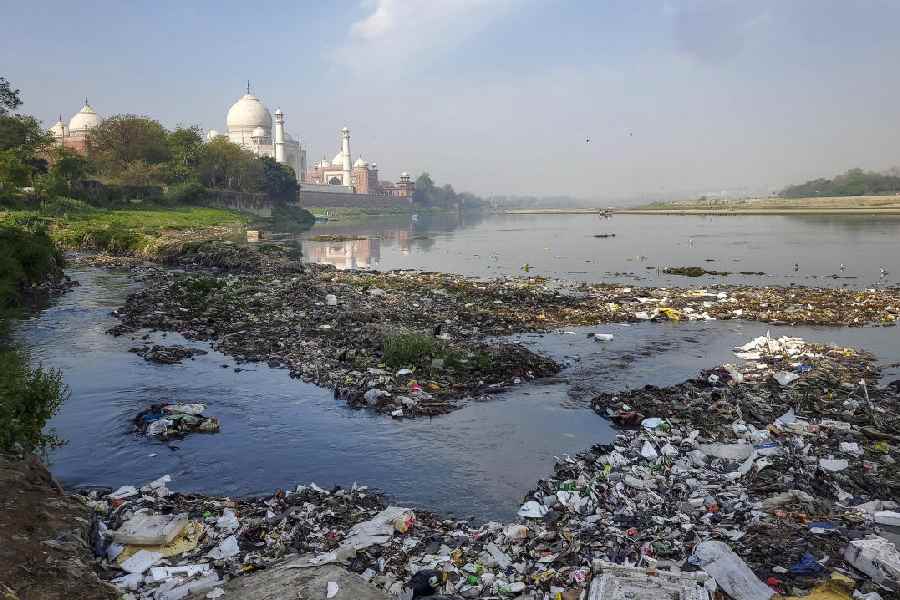 |
Panmunjeom (South Korea), April 1: On a sunny but cool spring afternoon, as gusts of wind blew across his face, private first class Joe Guerra, a US soldier, stood at an outpost here named checkpoint 3 and said: “We now have communist North Korea on three sides of us.”
The outpost overlooks a tranquil landscape — a mix of wooded flatland and hills, two villages in the distance, and a characteristic wilderness silence that contrasts with the metropolitan sounds in Seoul about 50km south along a highway named Freedom Road.
But checkpoint 3 lies within a near-trapezoidal patch of land designated the Joint Security Area (JSA) in Korea’s demilitarised zone (DMZ), the world’s last surviving Cold War border, a 4km wide and 248km long strip of land that slices the Korean peninsula into a North and a South.
The DMZ, established under the July 1953 truce that brought the Korean war to an end, remains a frontier on edge, fuelled by decades of hostility, punctuated by tensions between the North and the South of what was for centuries a united Korean empire.
The Korean Tourism Organisation now lures travellers to select sites along the DMZ, saying nature had healed the scars of war, and offering walks near mountain lakes and waterfalls, and tours to observatories that provide glimpses of the North Korean territory. The agency also calls the DMZ an ecological treasure house — only 0.5 per cent of the land, but home to one-third of the 2,900 plants, half of the 70 mammals, and one-fifth of the 300 birds found on the Korean peninsula.
Yet scattered across the DMZ are reminders of the Korean war — Jinburyeong peak was a primary battlefield, Chilseong observatory provides a view of North Korean soldiers’ barracks, Unification observatory displays weaponry used in the war.
The JSA — the only area along the DMZ where North Korean and South Korean soldiers can find themselves within shouting, or even talking, distance of each other — has its own landmarks from recent history.
Private first class Andrew Wilson, another US soldier assigned to the JSA, pointed out the Bridge of No Return where prisoners of the 1950-53 Korean war were exchanged. North Korean soldiers were offered a chance to stay in the South and told that if they opted to go to the North, they would not be able to return.
Wilson also pointed out a stone marker that lies at the site of the Axe Murder incident of August 1976 in which North Korean soldiers hacked to death two US officers who were trying to chop down a poplar tree that was blocking the view from checkpoint 3.
He narrated the tale of how a Soviet defector crossed over in 1984, running through a narrow path between a cluster of blue barracks-like buildings. The military demarcation line that separates the North from the South cuts right through these buildings. The incident set off a 20-minute light arms firefight that left three North Korean soldiers and one UN soldier dead.
About 28,500 US military personnel are now serving in South Korea, and Guerra and Wilson are among soldiers assigned to the United Nations Command Security Battalion at the JSA. It is an assignment that brings them physically closest to North Korean soldiers.
The armistice rules prohibit communication between soldiers from the two sides.
“Sometimes, North Korean soldiers yell or wave, or make derogatory gestures, but we do not respond,” said Guerra, a former resident of a Los Angeles suburb, who has spent a little more than two months here, and who turned 22 last week.
The two villages visible from checkpoint 3 are the only civilian settlements within the DMZ.
On the northern side of the DMZ, a cluster of large apartment buildings and a 160-metre-tall flagpost with the North Korean flag marks Kijongdong, or Propaganda village, so called because for years it was used to broadcast propaganda via loudspeakers aimed at the South.
“Kijongdong is like a great Hollywood set — just shells of buildings, nothing inside, no regular residents,” said Guerra. JSA officials believe North Korean authorities built the empty building shells to create an illusion of prosperity visible from the southern side.
In the South is Taesongdong, or Freedom village, populated by descendants of people who owned land there before the Korean war, but now uniquely tied to their village under DMZ-related rules.
The people of Taesongdong have to stay in the village at least 240 nights a year to maintain their right to continue living there. One man, Wilson said, was kicked out last year because he did not make that count. Its current population is 212, he said.
“We hear the mayor is worried — he’s got daughters, and men can’t marry into the village,” said Wilson, who teaches English and plays football once a week with Taesongdong children. “Their football is good, I get my butt kicked,” he said.
The future of Taesongdong — and indeed the rest of the DMZ — hinges on how relations between Pyongyang and Seoul will evolve.
The DMZ separates the world’s 12th largest economy with a per capita GDP of about $20,500 from one of the poorest countries in the world with a per capita of $1,800 that has experienced chronic food shortages.
The recent change in North Korea — Kim Jong Un took over as the Supreme Leader after the funeral of his father Kim Jong Il in December 2011 — has rekindled debate over prospects for the reunification of the sundered land, but the debate isn’t merely over the differences in ideologies.
While the South Korean government has declared reunification as a long-term objective, the stark economic differences between the two countries and the likely costs of reunification serve to temper enthusiasm.
Many young South Koreans appear to lack the bonds that their parents or grandparents had felt. “We feel sad for the North Korean people, but we don’t really feel like we’re living in a divided country,” said Bomin Kim, a 29-year-old office executive in Seoul.
“I’m absolutely against reunification — the differences between the two countries are too sharp. I don’t think reunification can happen for a long time, maybe 100 years from now,” said Jihyung Park, 23, a student of international relations at Hanyang University, Seoul.
A research paper by an Australian army colonel David Coghlan, published by the US Strategic Studies Institute four years ago, cited a study that estimated the cost of Korean reunification at between $50 billion and $67 billion. But, Coghlan pointed out, the study did not take into account educational, social, or humanitarian costs key to any successful reunification.
But sections of South Koreans also believe the initial costs could be made up by the gains that will emerge by reducing tensions across the border and living in a united country. “Over a period of time, Korea will only benefit from reunification,” said Sanghee Lee, a student of Russian studies at Seoul University.
“We’re family on two sides of a border — how can we forget that?”










